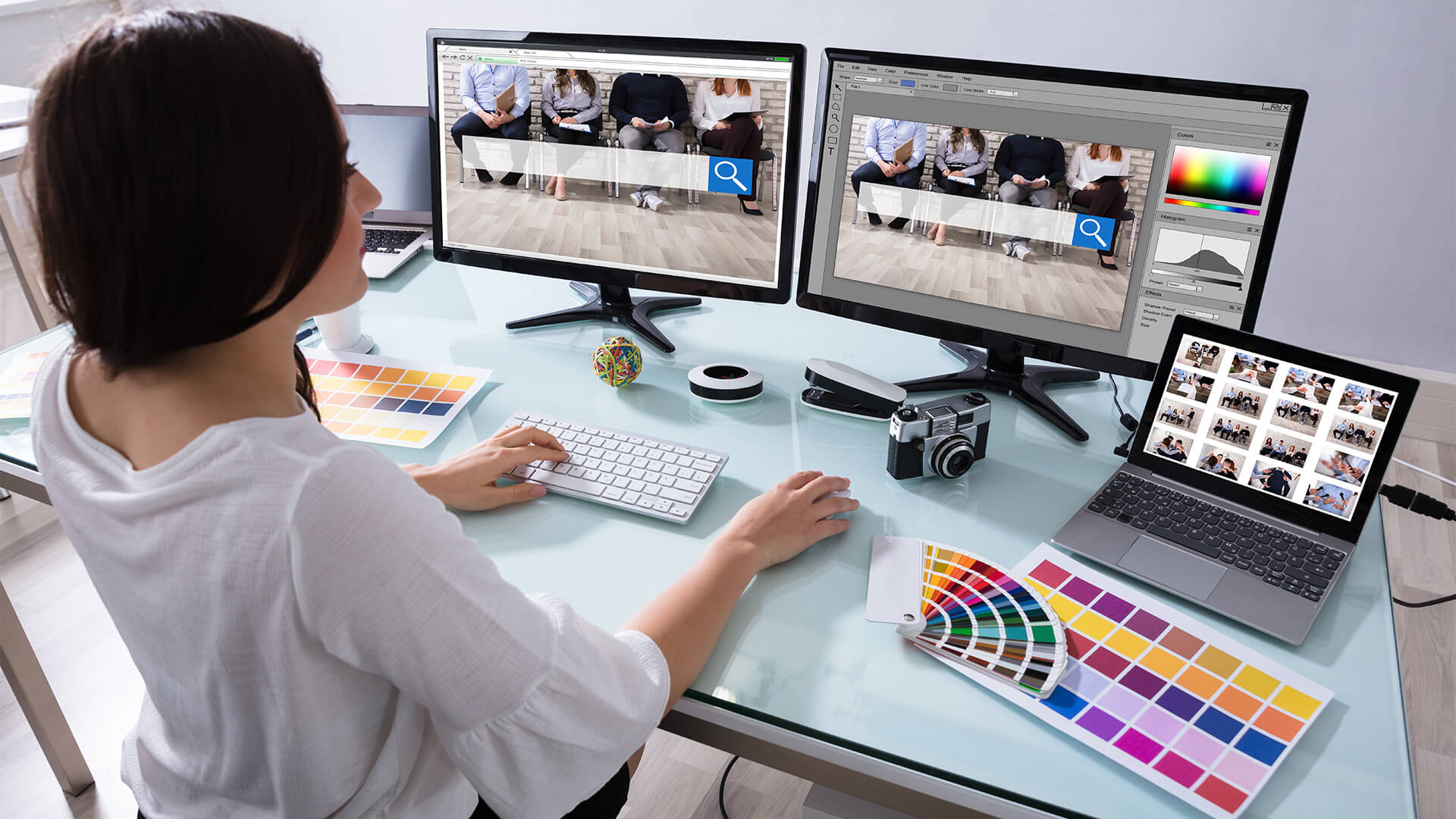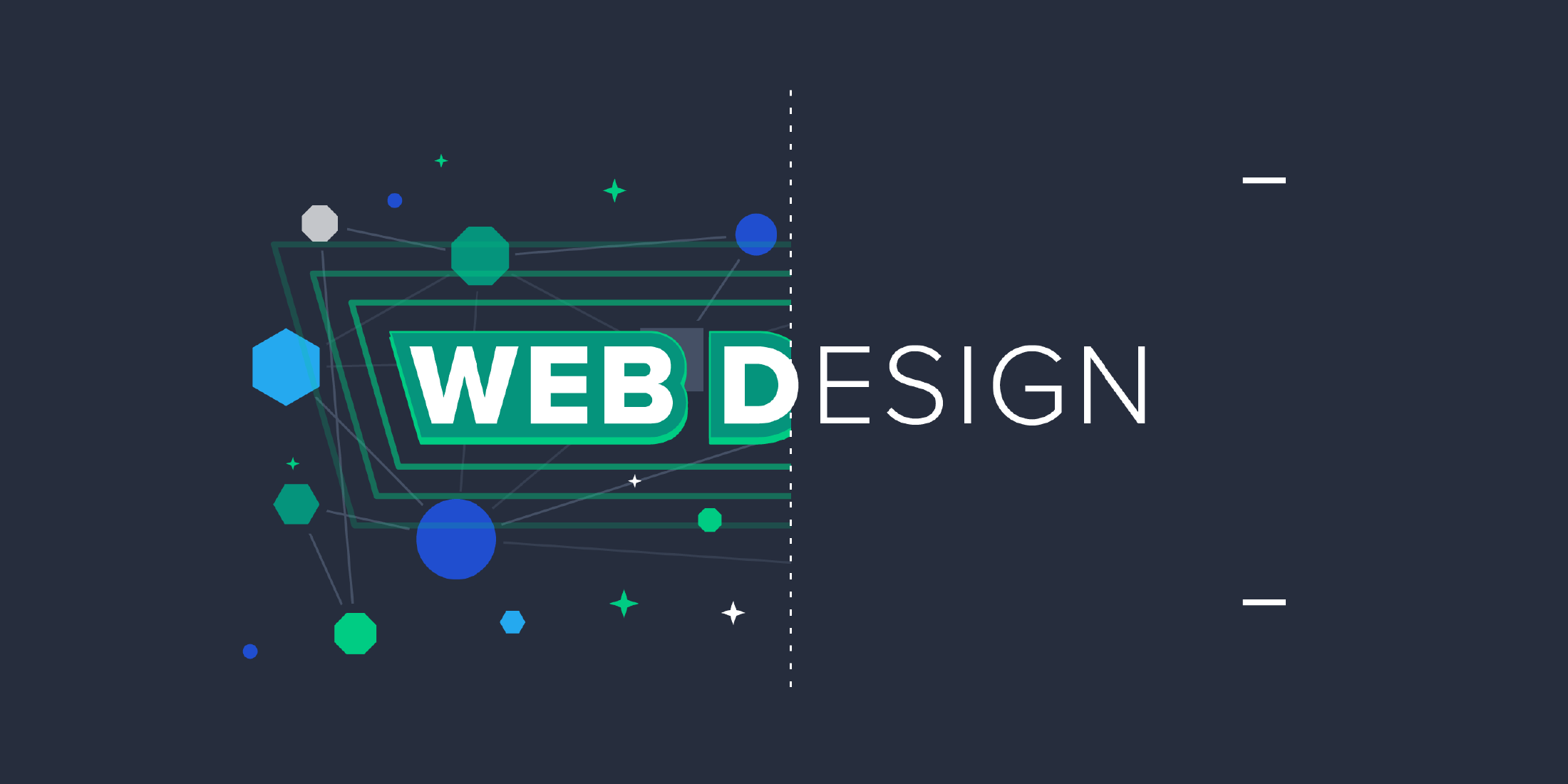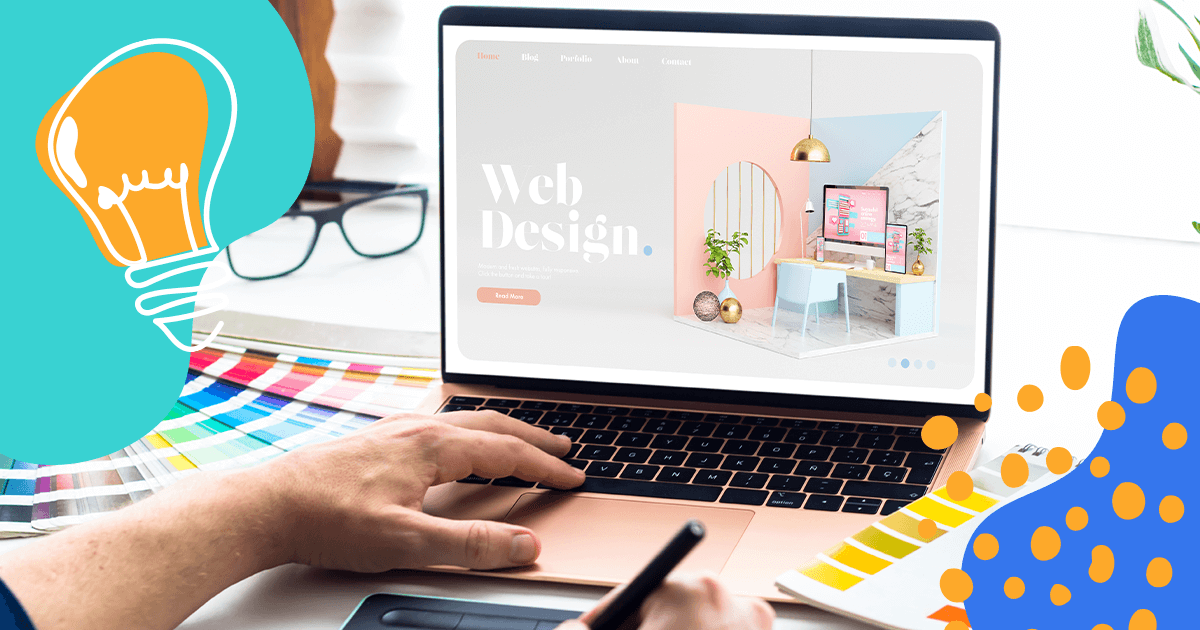All Categories
Featured
Table of Contents
- – Figma: The Collaborative Interface Design Tool...
- – Penner Home - Durham Web Design - Penner Web ...
- – Ciw Web Design Series Tips and Tricks:
- – 12 Essential Tips For Improving Your Web Desi...
- – What Is Web Design? The Ultimate Guide To Web...
- – Web Design - Uci Division Of Continuing Educa...
- – Web Design Services By Freelance Website Des...
- – Custom Web Design, Development & Digital Mar...
- – Top 30 Web Design Companies - Apr 2022 - Des...
- – Web Design Museum 1991 – 2006 Tips and Tricks:
- – Web Design Tools & Software - Webflow Tips a...
Figma: The Collaborative Interface Design Tool. Tips and Tricks:
Quick summary Functionality and the utility, not the visual design, figure out the success or failure of a website. Since the visitor of the page is the only individual who clicks the mouse and for that reason chooses everything, user-centric design has actually established as a standard approach for successful and profit-oriented website design - web design frederick md.
and the utility, not the visual design, identify the success or failure of a website. Since the visitor of the page is the only person who clicks the mouse and for that reason chooses everything, user-centric style has actually become a basic method for successful and profit-oriented web style. If users can't use a function, it may as well not exist.
g. where the search box must be positioned) as it has currently been performed in a variety of articles; instead we concentrate on the methods which, utilized properly, can cause more sophisticated design decisions and simplify the procedure of perceiving provided details. Please see that you might be interested in the usability-related short articles we have actually released before: Principles Of Great Site Style And Reliable Website Design Guidelines, In order to utilize the concepts properly we initially require to comprehend how users communicate with websites, how they believe and what are the fundamental patterns of users' habits.
Penner Home - Durham Web Design - Penner Web Design ... Tips and Tricks:
Visitors glimpse at each brand-new page, scan some of the text, and click on the first link that catches their interest or vaguely resembles the thing they're searching for. There are big parts of the page they do not even look at. A lot of users look for something fascinating (or useful) and clickable; as quickly as some appealing prospects are found, users click.
If a page offers users with top quality content, they are ready to jeopardize the material with ads and the design of the site. This is the reason that not-that-well-designed sites with high-quality content get a great deal of traffic over years. Content is more vital than the style which supports it.

Users do not check out, they scan. Notice how "hot" locations abrupt in the middle of sentences. This is normal for the scanning procedure. Extremely basic principle: If a site isn't able to meet users' expectations, then designer failed to get his task done properly and the business loses money. The greater is the cognitive load and the less intuitive is the navigation, the more willing are users to leave the site and search for options.
Ciw Web Design Series Tips and Tricks:
Neither do they scan web page in a direct style, going sequentially from one site section to another one. Rather users satisfice; they pick the first affordable choice. As quickly as they discover a link that looks like it might lead to the goal, there is an excellent chance that it will be immediately clicked.
It doesn't matter to us if we understand how things work, as long as we can use them. If your audience is going to imitate you're designing signboard, then style excellent billboards." Users want to have the ability to control their internet browser and rely on the consistent information discussion throughout the website.
If the navigation and site architecture aren't instinctive, the number of enigma grows and makes it harder for users to understand how the system works and how to obtain from point A to point B. A clear structure, moderate visual clues and quickly recognizable links can assist users to discover their path to their goal.
12 Essential Tips For Improving Your Web Design In 2022 Tips and Tricks:

claims to be "beyond channels, beyond items, beyond distribution". What does it indicate? Given that users tend to explore websites according to the "F"-pattern, these three declarations would be the very first elements users will see on the page once it is loaded. Although the style itself is easy and intuitive, to comprehend what the page has to do with the user requires to browse for the response.
As soon as you have actually achieved this, you can interact why the system works and how users can take advantage of it. Individuals will not use your website if they can't find their method around it. 2. Do Not Waste Users' Patience, In every job when you are going to use your visitors some service or tool, try to keep your user requirements minimal.
First-time visitors want to, not filling long web kinds for an account they might never ever use in the future. Let users check out the website and discover your services without forcing them into sharing private data. It's not affordable to force users to get in an email address to check the feature.
What Is Web Design? The Ultimate Guide To Website Design ... Tips and Tricks:
Stikkit is a perfect example for an easy to use service which needs almost nothing from the visitor which is unobtrusive and soothing. Which's what you desire your users to feel on your website. Apparently, Termite requires more. The registration can be done in less than 30 seconds as the form has horizontal orientation, the user doesn't even require to scroll the page.
A user registration alone is enough of an impediment to user navigation to cut down on incoming traffic. 3. Handle To Focus Users' Attention, As websites supply both static and dynamic content, some elements of the interface bring in attention more than others do. Clearly, images are more captivating than the text simply as the sentences marked as strong are more appealing than plain text.
Focusing users' attention to particular locations of the website with a moderate use of visual components can help your visitors to get from point A to point B without thinking about how it really is supposed to be done. The less enigma visitors have, the they have and the more trust they can develop towards the company the site represents.
Web Design - Uci Division Of Continuing Education Tips and Tricks:
Make Every Effort For Function Direct exposure, Modern web designs are usually slammed due to their technique of assisting users with aesthetically appealing 1-2-3-done-steps, big buttons with visual impacts etc. From the style perspective these elements really aren't a bad thing.
The website has 9 main navigation alternatives which are noticeable at the first look. What matters is that the content is well-understood and visitors feel comfy with the method they engage with the system.
com gets straight to the point. No charming words, no exaggerated declarations. Instead a rate: simply what visitors are trying to find. An optimal solution for reliable writing is touse brief and concise phrases (come to the point as quickly as possible), use scannable layout (classify the material, utilize multiple heading levels, utilize visual elements and bulleted lists which break the circulation of uniform text blocks), use plain and unbiased language (a promotion doesn't require to seem like advertisement; provide your users some affordable and unbiased reason they need to utilize your service or remain on your site)6.
Web Design Services By Freelance Website Designers - Fiverr Tips and Tricks:
Users are rarely on a site to enjoy the style; moreover, for the most part they are looking for the information in spite of the design - web design frederick md. Pursue simpleness rather of intricacy. From the visitors' perspective, the very best website style is a pure text, without any advertisements or additional material obstructs matching precisely the question visitors used or the material they have actually been looking for.
Finch plainly presents the details about the website and provides visitors a choice of choices without overcrowding them with unnecessary content. Not just does it help to for the visitors, however it makes it possible to perceive the information provided on the screen.
Complex structures are harder to read, scan, examine and deal with. If you have the choice between separating 2 design segments by a noticeable line or by some whitespace, it's normally much better to utilize the whitespace option. (Simon's Law): the better you handle to offer users with a sense of visual hierarchy, the easier your content will be to view.
Custom Web Design, Development & Digital Marketing ... Tips and Tricks:
The very same conventions and rules need to be used to all elements.: do the most with the least quantity of cues and visual aspects. Four significant indicate be considered: simpleness, clarity, diversity, and emphasis. Simpleness includes just the aspects that are most essential for communication. Clearness: all components ought to be created so their meaning is not ambiguous.
Conventions Are Our Friends, Standard style of website components does not lead to a boring website. As they lower the learning curve, the requirement to figure out how things work. It would be an usability nightmare if all websites had different visual presentation of RSS-feeds. That's not that different from our regular life where we tend to get used to fundamental concepts of how we organize data (folders) or do shopping (placement of products).
comprehend what they're anticipating from a site navigation, text structure, search placement etc. A typical example from functionality sessions is to equate the page in Japanese (assuming your web users do not understand Japanese, e. g. with Babelfish) and supply your usability testers with a task to discover something in the page of various language.
Top 30 Web Design Companies - Apr 2022 - Designrush Tips and Tricks:
Test Early, Test Frequently, This so-called TETO-principle should be used to every web design project as functionality tests often supply into substantial problems and concerns related to a provided layout. Test not too late, not too little and not for the wrong reasons.
Some important indicate keep in mind: according to Steve Krug, and testing one user early in the project is much better than screening 50 near the end. Accoring to Boehm's very first law, errors are most frequent throughout requirements and style activities and are the more costly the later on they are removed.
That implies that you develop something, test it, fix it and after that test it again. There may be issues which have not been discovered throughout the preliminary as users were almost obstructed by other problems. usability tests. Either you'll be pointed to the issues you have or you'll be pointed to the absence of significant style flaws which is in both cases a beneficial insight for your project.
Web Design Museum 1991 – 2006 Tips and Tricks:

This holds for designers too. After you have actually worked on a site for couple of weeks, you can't observe it from a fresh point of view anymore. You know how it is built and therefore you know exactly how it works you have the knowledge independent testers and visitors of your website would not have.
It can be linked to other areas such as graphic style, user experience, and multimedia arts, however is more appropriately seen from a technological standpoint. It has become a large part of individuals's everyday lives. It is difficult to imagine the Internet without animated graphics, different designs of typography, background, videos and music.

During 1991 to 1993 the Web was born. Text-only pages might be viewed utilizing a simple line-mode web browser. In 1993 Marc Andreessen and Eric Bina, developed the Mosaic web browser. At the time there were multiple web browsers, however most of them were Unix-based and naturally text heavy. There had actually been no integrated technique to graphic design aspects such as images or sounds.
Web Design Tools & Software - Webflow Tips and Tricks:
The W3C was produced in October 1994 to "lead the World Wide Web to its full potential by establishing common protocols that promote its development and ensure its interoperability." This prevented any one business from monopolizing a propriety internet browser and programming language, which might have modified the impact of the Web as a whole.
As this has happened the technology of the web has also proceeded. There have actually likewise been considerable modifications in the method individuals use and access the web, and this has actually altered how websites are developed. Given that completion of the internet browsers wars [] new web browsers have actually been released. Many of these are open source indicating that they tend to have much faster advancement and are more helpful of new requirements.
Learn more about Lovell Media Group LLC or TrainACETable of Contents
- – Figma: The Collaborative Interface Design Tool...
- – Penner Home - Durham Web Design - Penner Web ...
- – Ciw Web Design Series Tips and Tricks:
- – 12 Essential Tips For Improving Your Web Desi...
- – What Is Web Design? The Ultimate Guide To Web...
- – Web Design - Uci Division Of Continuing Educa...
- – Web Design Services By Freelance Website Des...
- – Custom Web Design, Development & Digital Mar...
- – Top 30 Web Design Companies - Apr 2022 - Des...
- – Web Design Museum 1991 – 2006 Tips and Tricks:
- – Web Design Tools & Software - Webflow Tips a...
Latest Posts
Web Design Museum 1991 – 2006 Tips and Tricks:
Web Design Services - Verizon Small Business Essentials Tips and Tricks:
Web Design Services - Networksolutions.com Tips and Tricks:
More
Latest Posts
Web Design Museum 1991 – 2006 Tips and Tricks:
Web Design Services - Verizon Small Business Essentials Tips and Tricks:
Web Design Services - Networksolutions.com Tips and Tricks: